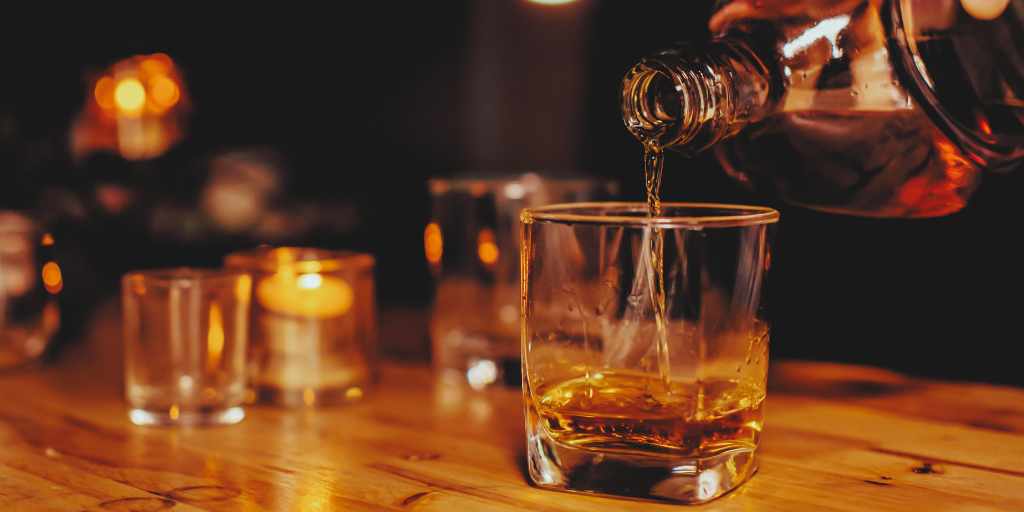Wine glasses play a crucial role in shaping how people experience wine. Various designs have specific features that enhance the enjoyment of different wine types. From the large bowl of a Burgundy glass to the slender shape of a champagne flute, each glass serves a purpose, altering the aroma, taste, and overall presentation.
Understanding the unique characteristics of each wine glass allows wine enthusiasts to fully appreciate their favourite beverages. For example, some glasses are designed to capture aromas, while others help deliver flavours more effectively. This guide explores the essential elements of wine glass design and offers insight into how each one contributes to a better wine-drinking experience.
Key Takeaways
- Different wine glasses cater to specific types of wine.
- The design influences aroma, taste, and enjoyment.
- Choosing the right glass can enhance the overall experience.
Critical Aspects of Wine Glass Design
Wine glasses are designed with specific features that enhance the drinking experience. Each type of glass has elements that cater to different varieties of wine.
Burgundy Glass
The Burgundy glass has a large balloon shape. This design captures aromas, especially for aromatic wines like Pinot Noir. The wide bowl traps vapours when the wine is swirled. To maintain the wine’s temperature, holding the glass by the stem is recommended. The thin rim of the glass helps deliver wine smoothly over the palate, creating a better-tasting experience.
Bordeaux Glass
The Bordeaux glass features a narrower bowl for Cabernet Sauvignon and Bordeaux wines. This shape provides ample air exposure, essential for tannic wines. The glass has enough headroom to allow oxygen to soften the wine’s flavours. This design ensures that the wine is delivered evenly across the palate.
Chardonnay Glass
The Chardonnay glass is smaller and shorter in stature. Its small bowl is suited for wines that require less air. This design helps highlight the acidity and aromas of white wines. Although it serves its purpose, many prefer to drink Chardonnay from larger glasses for better flavour delivery.
Dessert Wine Glass
A dessert wine glass is smaller and often fluted. It is designed to hold sweet wines that are usually served in smaller quantities. The narrower shape helps concentrate the aromas, allowing for a richer tasting experience.
Champagne Flute
The Champagne flute is narrow at the bottom and widens at the top. This shape promotes the rise of bubbles, keeping Champagne sparkling. While it is visually appealing, some suggest using a white wine glass to evaluate the wine’s qualities better.
Coupe Glass
The coupe glass is a short and wide glass known for its unique shape. Its larger surface area allows bubbles to escape quickly. This glass is often used for cocktails or sparkling wines that do not require extensive evaluation.
Stemless Wine Glass
The stemless wine glass has gained popularity for its casual appeal. Lacking a stem or base, this design encourages a relaxed drinking atmosphere. Its wide bowl allows for swirling, making it easier to enjoy wine in a more informal setting.
Each of these wine glasses serves a distinct purpose, shaped to enhance the enjoyment of various types of wine.
Burgundy Glasses
Design and Purpose
Burgundy glasses have a unique, rounded shape that is larger than many other types of wine glasses. This design traps the scents of aromatic wines like Pinot Noir. When the wine is swirled in the glass, the shape helps keep the aromas concentrated. The glass is intended to be held by the stem to maintain the wine’s temperature.
The burgundy glass’s rim is thin, allowing for a smooth pour. A thin lip enhances the tasting experience, making it easier for the wine to flow over the palate evenly. This design can bring out the flavours of high-acid grapes, allowing each sip to be enjoyable.
Drinking Experience
Using a burgundy glass can change how a person enjoys wine. The shape of the glass directs the wine to a specific point in the mouth, allowing the flavours to spread across the tongue, and enhancing the tasting experience. Many people appreciate the ability to admire the wine’s aromas, too, making it a favourite among wine enthusiasts.
This versatile glass is suitable for red wines and other beverages, such as margaritas. Its larger bowl and elegant design make it a popular choice in homes where wine is frequently enjoyed.
Bordeaux / Cabernet Glasses
Design Features
Bordeaux and Cabernet glasses have distinct shapes designed for specific types of wine. They generally look like larger wine glasses with a more slender bowl compared to Burgundy glasses. This shape allows for greater air exposure, which is important for tannic wines like Cabernet Sauvignon.
The lip of the glass curves outward. This design helps aerate the wine while capturing the aromas without trapping them too much. The glass is built to provide a good amount of headspace and volume for the wine to breathe.
Aeration and Wine Delivery
When a person tips the Bordeaux glass, the wine covers the palate quickly from front to back. This design promotes an even delivery of the wine across the tongue, enhancing the tasting experience. The shape allows for efficient aeration, which softens the tight flavours often found in young Cabernet wines.
The glass functions somewhat like a mini decanter, making it easier for the wine to interact with the air. This design helps unlock the full potential of red wines, creating a smoother and more enjoyable drinking experience.
White Wine Glasses
Shape and Design for White Wines
White wine glasses usually have a smaller bowl compared to red wine glasses. This design helps to enhance the aromatic qualities and acidity of white wine. A smaller bowl keeps the wine’s temperature low and captures the crisp scents. The shape allows for a quick and even delivery to the palate, which can be important for white wines that are often lighter and more refreshing.
Considerations for Chardonnay Glasses
Chardonnay glasses are typically short with a narrow bowl. This design has less headroom, which suits the specifics of white wines. With a Chardonnay, the glass allows for a better perception of its flavours, but some may find the smaller bowl restricts the overall drinking experience. The glass should not overwhelm the wine’s characteristics, making it essential to choose one that complements Chardonnay well.
Dessert Wine Glasses
Glass Size and Function
Dessert wine glasses are typically smaller compared to regular wine glasses. They have a shape that is somewhat similar to standard wine glasses but often feature a more fluted design. This design helps to capture the sweet aromas of the wine while still allowing for easy sipping. Since dessert wines are sweeter and usually higher in alcohol, a smaller pour is common. The standard serving for these wines is about three ounces, which feels more appropriate than using a larger glass.
Sweet Wine Presentation
When dessert wines are served in smaller glasses, it sets the expectation for something special. The size and shape signal that this is a sweeter and more intense experience. Pouring a dessert wine into a glass that is too large might give a misleading impression to drinkers, suggesting they are receiving less wine than they actually are. The correct glass for dessert wines enhances the overall tasting experience, focusing on sweetness and aroma to enrich the enjoyment during a meal or as a treat.
Champagne Flutes
Effectiveness for Sparkling Wines
Champagne flutes have a unique design that enhances the experience of drinking sparkling wines. The glass is slender, typically about two inches wide at the top. This narrow shape helps keep the bubbles rising to the surface.
When sparkling wine is poured into a wider glass, it has more surface area exposed to air. This can cause the bubbles to dissipate quickly. In contrast, the fluted shape allows the bubbles to stay active longer, creating a lively drinking experience.
While champagne flutes are popular for serving sparkling wines, some prefer using a white wine glass for champagne. The flute’s design does not allow for swirling, which can limit the ability to appreciate the wine’s aromas. Despite this, flutes add a celebratory touch, making them a fun choice for festive occasions.
Coupe Glasses
Design and History
The coupe glass has a unique, short, and broad shape. It features a thick rim and lacks the seamless design found in other glasses. There is a popular story that suggests its shape resembles Marie Antoinette’s breast. This glass is often associated with cocktails and sparkling wines but does not provide the best experience for swirling or evaluating the drink. Instead, it emphasizes the release of bubbles, making it entertaining for sparkling beverages.
Beverage Compatibility
The coupe glass is well-suited for drinks that do not require extensive aeration. It is often used for cocktails and sparkling wines that can be enjoyed without the need for careful evaluation. Its design allows for a quick and enjoyable sip. While it may not be the ideal choice for serious wine tasting, it serves as a fun option for casual drinking experiences, like enjoying sparkling cider.
Stemless Wine Glasses
Changes in Casual Drinking
Stemless wine glasses have grown in popularity over the years. These glasses lack the traditional stem and base seen in standard wine glasses. Their design encourages a more relaxed approach to wine drinking.
People enjoy using these glasses because they are sturdy and practical for various settings, such as picnics or casual gatherings. The wide bowl allows for swirling, which helps capture the wine’s aromas even without a stem.
While some wine enthusiasts may prefer classic designs for specific wines, stemless glasses offer a casual and enjoyable way to savour different types of wine. This change reflects a shift in how people approach wine consumption, making it more accessible and less formal.




